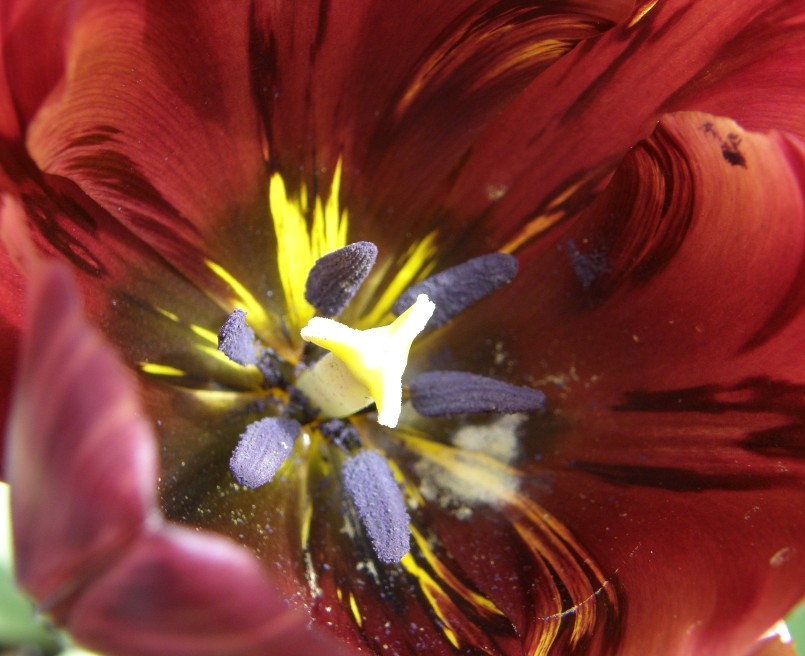This year I invested in a small number of, (they are quite expensive), historic tulips, for a bit of fun. Many of these historic tulips are ultimately supplied by the Hortus Bulborum in the Netherlands, which was established in the 1920s by a Dutch schoolmaster who was concerned that older bulb cultivars were at risk of disappearing.
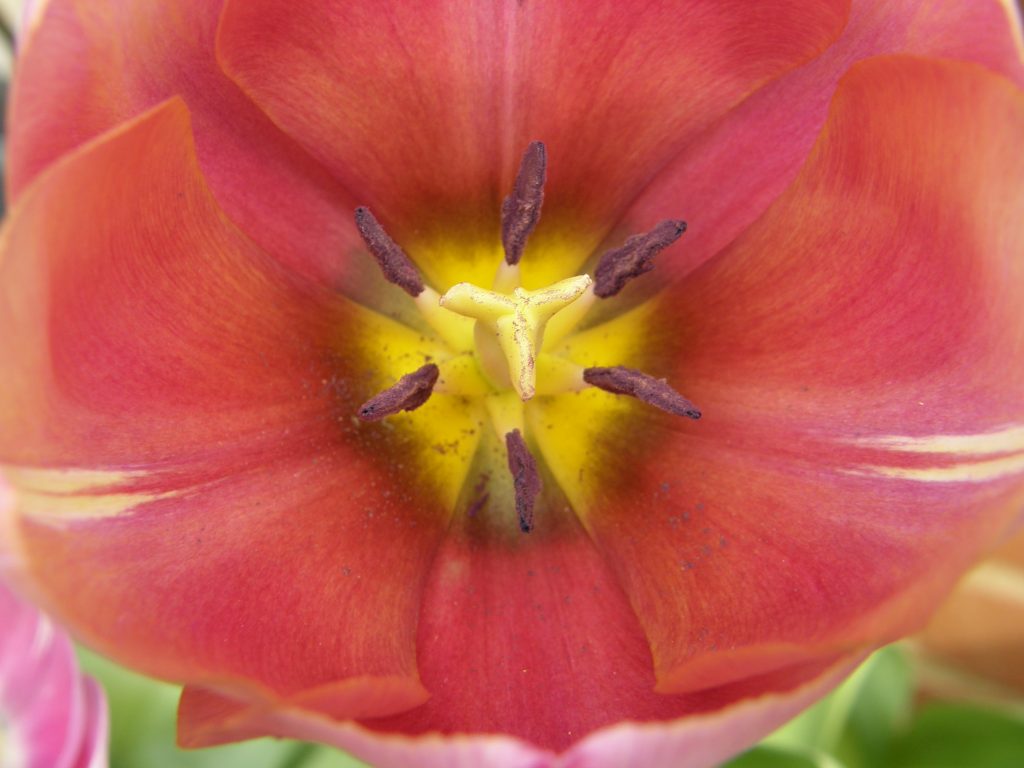
Meet my favourite tulip of 2023, ‘Mrs Harold I Pratt’ (1926). The silvered pink outer petals formed a generous and pleasingly shaped tulip. Inside, the combination of softly blended warm tan, lilac and pink just worked for me.
Who was the lady? You may ask. Harriet Pratt was the wife of US millionaire Sovereign Oil owner Harold. Pratt’s motor oil will be familiar to automobilia collectors in the UK. Harriet was a keen gardener. She took charge of many of the floral displays for the 1939 New York World’s Fair, and was a leading light of the New York Botanic Gardens, (amongst many other horticultural projects).
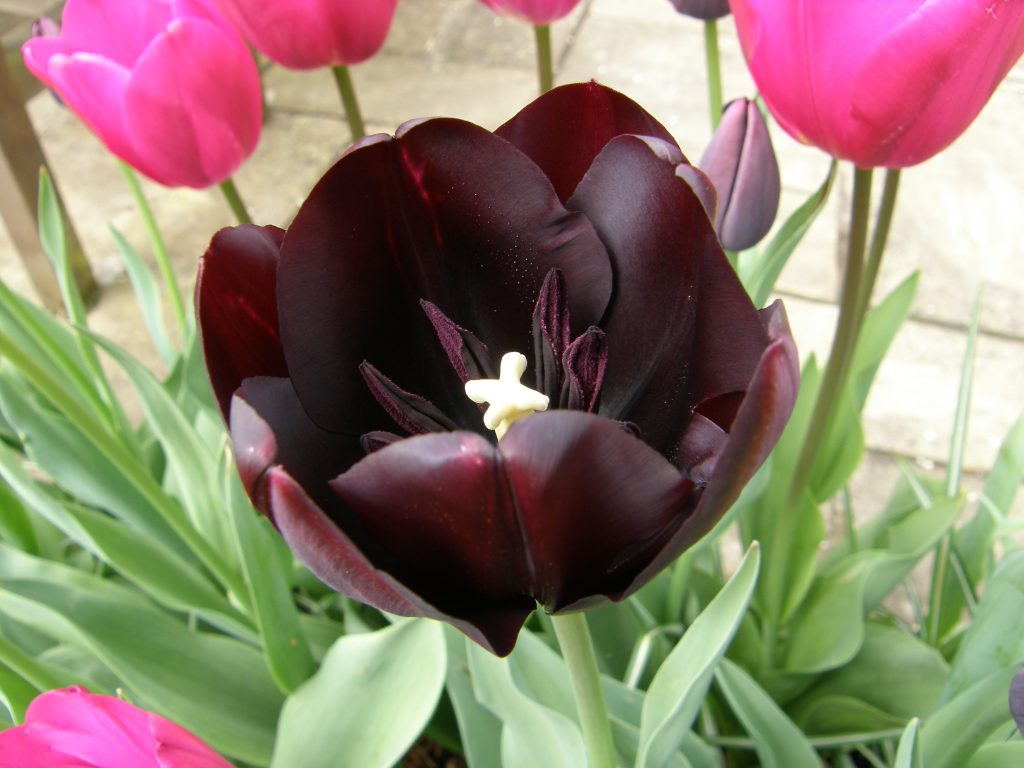
‘Queen of Night’ (1944). I hadn’t grown this ‘quite oldie’ for a while, but how beautiful she still is. The sheen of a thoroughbred horse’s coat in high summer!
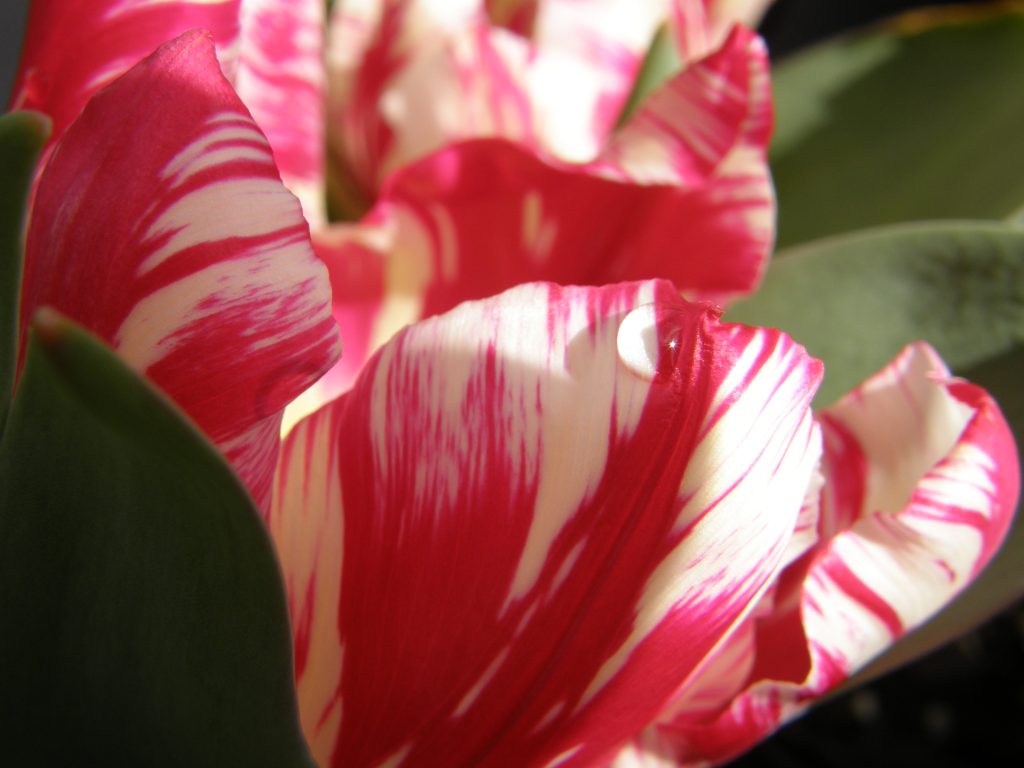
‘Silver Standard’ was another historical tulip purchase, and one of the oldest I have grown, it is said to date to around 1760. It was fairly early into flower and quite low growing, the flowers more cupped within the foliage.
What you are looking at here is the style of tulip that precipitated the tulipmania collapse in the Netherlands in 1637, and appeared frequently in Dutch still-life floral paintings. These striped tulips, particularly this colour combination, remained popular for well over 100 years in Northern Europe. I think I prefer the chestnut brown and yellow colourway, bizarre, (‘Absalon’ is an old Dutch tulip example at the top of the page), or the purple and white bybloemen, (‘Columbine’ is an old English tulip example still available today).
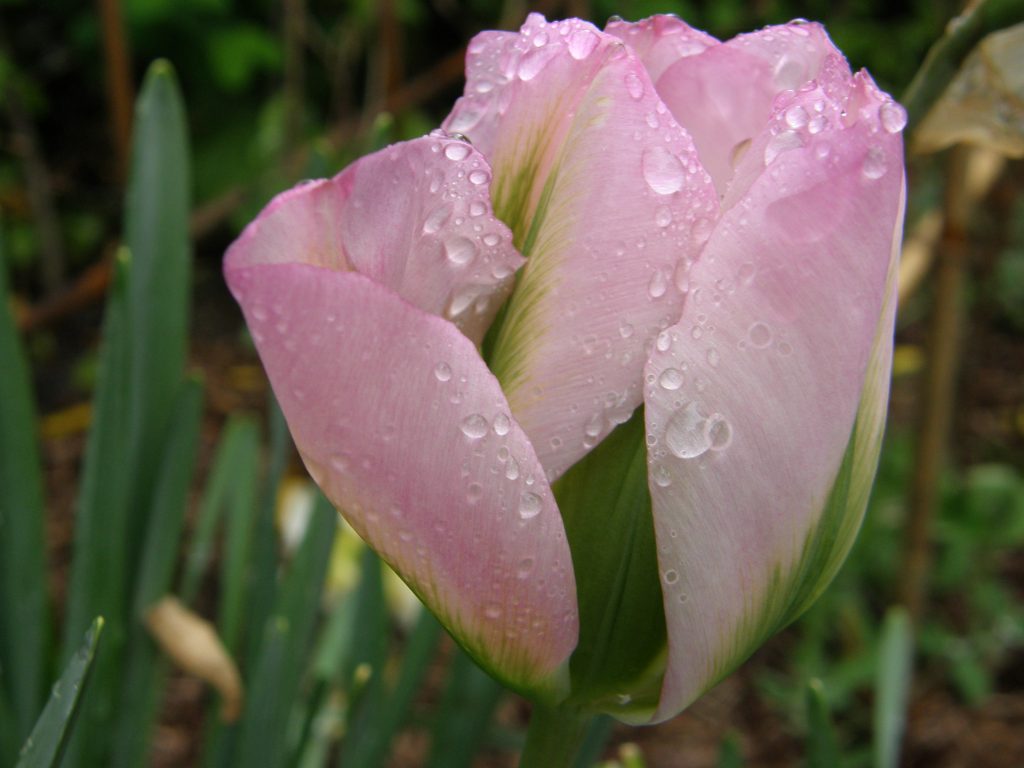
‘Groenland’ (1955) is not a tulip I expected to like, but I did. Later flowering, this viridiflora tulip had tall elegant stems. The colours softened gently over a number of weeks.
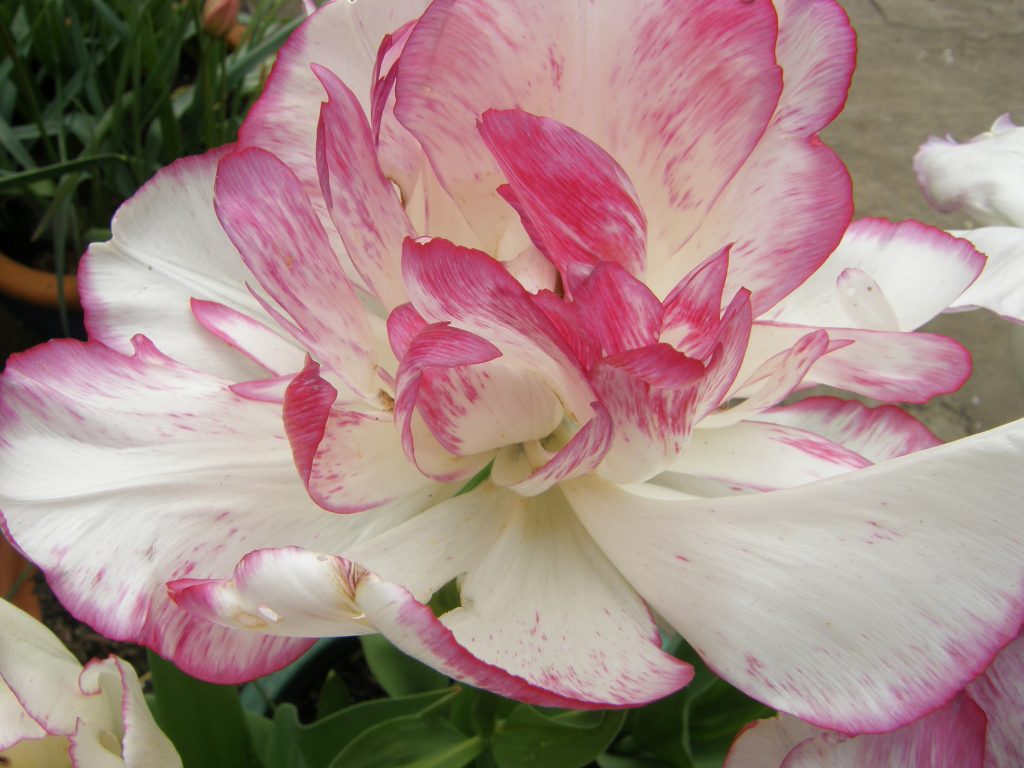
‘Belicia‘ (2006). For a couple of years I have been through a double tulip growing phase, and have had disappointments, until I realised you have to pay for top quality plump bulbs to get the best results. ‘Belicia’ is a tulip that keeps on giving, getting looser petalled and more suffused with deeper pink over a number of weeks. I am growing it again for 2024.
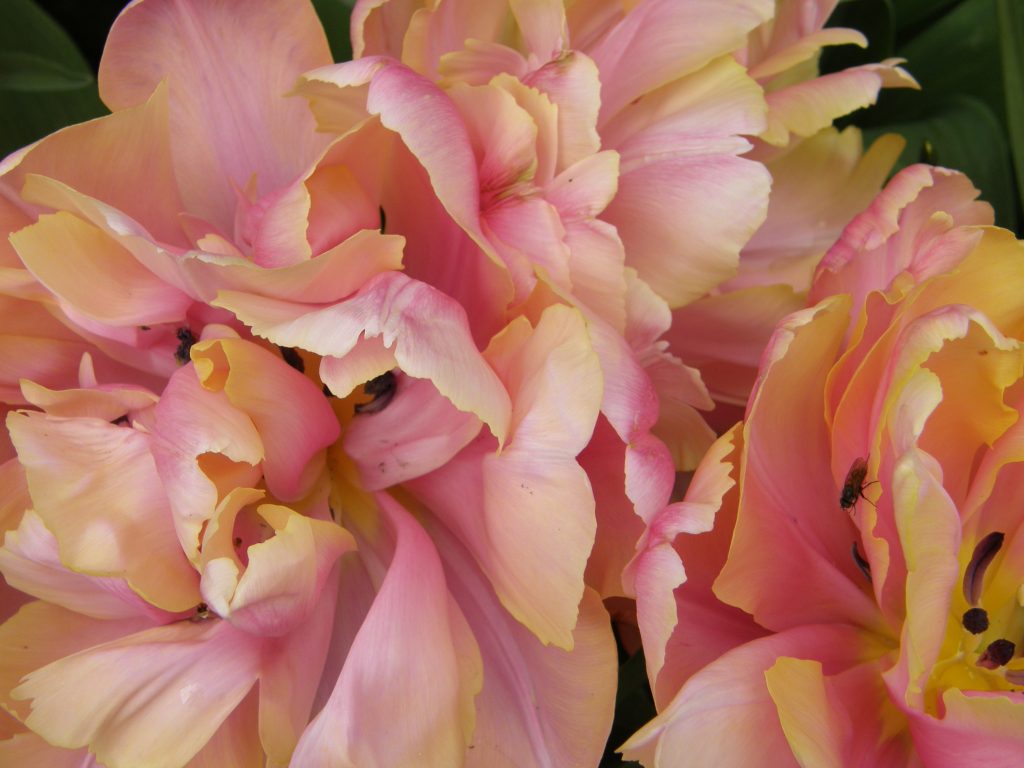
‘Pink Star’ (1992) was a random ‘cheap in a bulb sale’ purchase, (please excuse the slug and the fly), but rather lovely, fading from warm to vintage tones, and with good doubling, (later flowering).
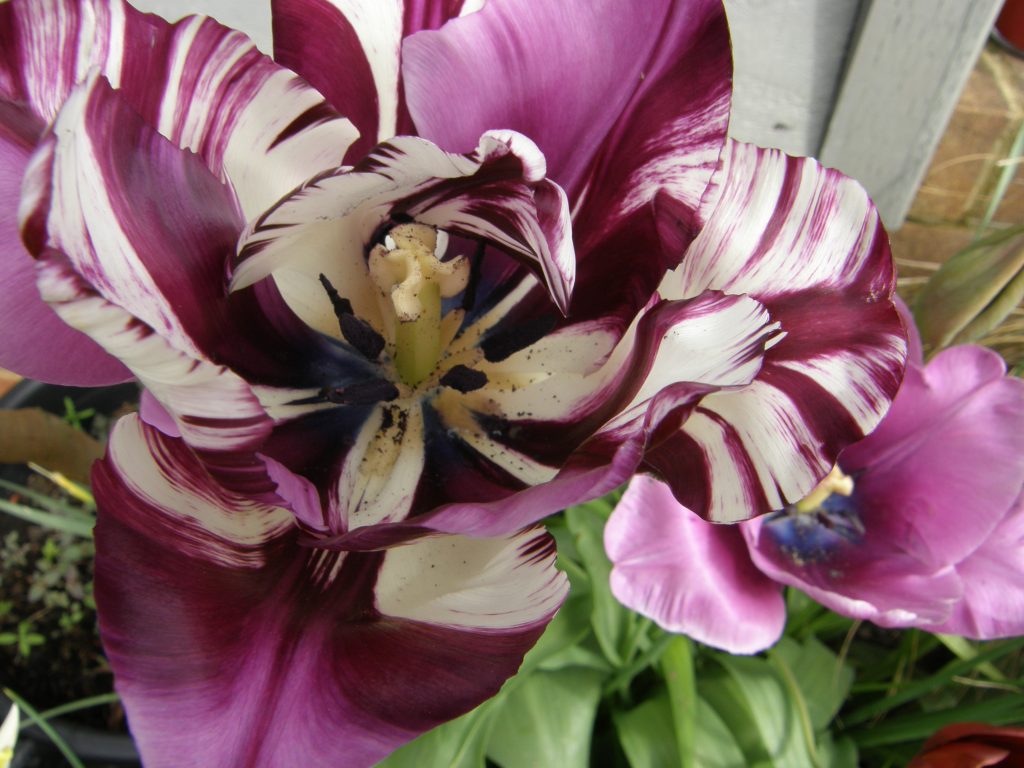
This is one reason why the Dutch stopped commercially growing the stripy tulips which were caused by a virus. I don’t normally keep tulip bulbs after flowering, but I did last year with oldie (1916), but still easy to source, ‘Bleu Aimable’, (you can see the unbroken colour of the tulip in the background). This year the virus has ‘broken’ the pigment in the petals of this bulb and I have my own stripy Dutch tulip, bybloemen stylie.
It is said that the stripes on Dutch Rembrandt tulips, and others, like red and white parrot tulip ‘Estella Rijnveld’ (1954) are the result of sporting/selection, and not virus, which means the colours remain consistent and you don’t get any surprises! The Old English Tulips are still broken by virus.
The virus can also affect lilies, rich Bordeaux coloured lily, ‘Largo’ didn’t look quite as attractive as the tulips when it flowered ‘broken’ this summer.
Incidentally the cause of tulip breaking was first officially identified and described by Dorothy Cayley in 1928 working at the John Innes Institute in Merton, Surrey.

